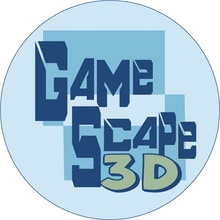Have you ever thought of living life on Mars? After many submissions, three stages and four years, the 3D-Printed Habitat Challenge of NASA is closing. The competition of the space agency for designing a living place can be made on Mars, Moon or any other planet.
Designing a habitat involve some local materials that reach the last stage. NASA has gifted 100,000 dollars. This amount is divided among the top three winners of the complete stage of virtual construction.
Virtual Construction Winners:
A total of 11 teams presented the offers for the whole stage of virtual construction. Search + Apis Cor in New York had the first place and got 33,954.11 dollars on March 27. Arkansas based Team Zopherus, the Rogers, took the second place and received 33,422.01 dollars. Connecticut’s Mars Incubator, the New Heaven took the third place and got 32,623.88 dollars.
The entire challenge inquired the different teams to show the designs digitally in the Martian environment. While utilising BIM, making a primary stage in the competition included renderings. At that time, the participants assessed depending on several factors. These factors included construction, spatial speed, programming and layout of living place. There also included a making of small 3D-printed videos as well as models related to living life on Mars.
Living Life On Mars: Martian Regolith
Search+ Apis Cor presented a sequence of towers similar to the rock printed from Martian regolith. The hyperboloid shape of the habitat looked identical to a pressed cylinder. It took place naturally from the needs to include the inward pressure of the building.
Also, the great force used on a pressurised structure in the gas pushing outward and for instance, thinking of an inflated balloon. The labs and living areas of the habitats linked with each other. But there were several compartments in case of emergency. The assembly of every hexagonal window linked and contained the pressure panes and also redundant seals.
Zopherus Concept:
The concept of Zopherus was quite inferior and straightforward to the ground. It consisted of a sequence of latticed fields. A lander would assemble the homes which start a chain of independent robots for collecting the raw materials. It makes concrete from Martian calcium oxide, ice, and dust through mixing the elements as well as printing each hexagonal structure.
The joining modules and the habitat would be best for capturing the sunlight. It also involved the sliding panels for protecting the windows when there were too strong solar rays. The Mars Incubator preferred using a modular panel system. It used the regolith for making the plates of the panels. Also, the middle shape would link to multiple extra pods.
Hence, the complete arrangement lifted through a sequence of support struts. The primary space for a living would divide. Also, it linked to biology where plants would be produced and space of multi-use. A part of Centennial Challenges on NASA is living life on Mars, the 3D-printed home challenge. The final stage of virtual making was the 4th out of five steps. Finally, the last one will conduct on 1st May. So, the winners will be awarded 800,000 dollars pot. For more details, visit our page.
The post Living Life On Mars: Future Home For Astronauts – NEWS appeared first on Inov3D.





